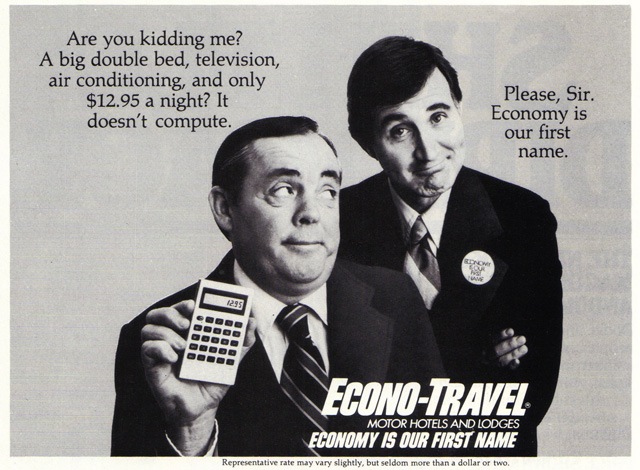39 8.1 The Evolution of Marketing

Marketing is a continuous, sequential process through which management plans, researches, implements, controls, and evaluates activities designed to satisfy the customers’ needs and wants, and meet the organization’s objectives. According to Morrison (2010), services marketing “is a concept based on a recognition of the uniqueness of all services; it is a branch of marketing that specifically applies to the service industries” (p. 767). In general, the aims of marketing are to “create value for customers,” “build strong relationships” and “capture value from customers in return” (Kotler, Armstrong, Trifts, & Cunningham, 2014, p. 2).
Marketing in the tourism and hospitality industry requires an understanding of the differences between marketing goods, services, and experiences. To be successful in tourism marketing, organizations need to understand the unique characteristics of their tourism experiences, the motivations and behaviours of travelling consumers, and the fundamental differences between marketing goods, services, and experiences.
Until the 1930s, the primary objective of businesses was manufacturing, with little thought given to sales or marketing. In the 1930s, a focus on sales became more important; technological advances meant that multiple companies could produce similar goods, creating increased competition. Even as companies began to understand the importance of sales, the needs and wants of the customer remained a secondary consideration (Morrison, 2010).
In 1944, the first television commercial, for Bulova watches, reached 4,000 sets (Davis, 2013). The decades that followed, the 1950s and 1960s, are known as an era when marketing began to truly take off, with the number of mediums expanding and TV ad spending going from 5% of total TV revenues in 1953 to 15% just one year later (Davis, 2013).

The era from approximately 1950 to around 1970 was known as a time of marketing orientation (Morrison, 2010). Customers had more choice in product, which required companies to shift focus to ensure that consumers knew how their products matched specific needs. This was also the time when quality of service and customer satisfaction became part of organizational strategy. We began to see companies develop internal marketing departments, and in the 1960s, the first full-service advertising agencies began to emerge.
Societal marketing emerged in the 1970s when organizations began to recognize their place in society and their responsibility to citizens (or at least the appearance thereof). This change is demonstrated, for example, by natural resource extraction companies supporting environmental management issues and implementing more transparent policies. This decade saw the emergence of media we are familiar with today (the first hand-held mobile phone was launched in 1973) and the decline of traditional marketing through vehicles such as print; the latter evidenced by the closure of LIFE Magazine in 1972 amid complaints that TV advertising was too difficult to compete with (Davis, 2013).
The 1990s ushered in the start of the online marketing era. E-commerce (electronic commerce) revolutionized every industry, perhaps impacting the travel industry most of all. Tourism and hospitality service providers began making use of this technology to optimize marketing to consumers; manage reservations; facilitate transactions; partner and package itineraries; provide (multiple) customer feedback channels; collect, mine, analyze, and sell data; and automate functions. The marketing opportunities of this era appeared limitless and paved the way for the maturation of social media marketing and a number of other marketing shifts including the increased use of big data, mobile technology, and short- and long-form video content in marketing, as well as a more empowered and engaged consumer. Table 8.1 summarizes the evolution of marketing over the last century and beyond.
| [Skip Table] | |
| Timeframe | Marketing Era |
|---|---|
| 1920–1930 | Production orientation |
| 1930–1950 | Sales orientation |
| 1950–1960 | Marketing department (marketing orientation, internal agency) |
| 1960–1970 | Marketing company (marketing orientation, external agency) |
| 1970–Present | Societal marketing |
| 1990–Present | Online marketing |
| 2000–Present | Social media marketing |
| 2010–Present | Several competing and interwoven trends (big data, customer-centricity, content strategy, mobile, etc.) |
| Data source: Morrison, 2010; Callahan 2020 | |
Typically, the progression of marketing in tourism and hospitality has been 10 to 20 years behind other sectors. Some in the industry attribute this to the traditional career path in the tourism and hospitality industry where managers and executives worked their way up the ranks (e.g., from bellhop to general manager) rather than through a post-secondary business education that is more the norm today. It was previously commonly believed that to be a leader in this industry one had to understand the operations inside-out, so training and development of managers was based on technical and functional capabilities, rather than marketing savvy. And, as we’ll learn next, marketing services and experiences is distinct and sometimes more challenging than marketing goods. For these reasons, most businesses in the industry have been developing marketing skills for only about 30 years (Morrison, 2010).
Long Descriptions
Figure 8.1 long description: A black-and-white advertisement. A man holds up a calculator looking skeptical. He says, “Are you kidding me? A big double bed, television, air conditioning, and only $12.95 a night? It doesn’t compute.” A hotel staff member stands behind him looking pleased and says, “Please, sir. Economy is our first name.” At the bottom of the ad, it says, “Econo-Travel: Motor Hotels and Lodges. Economy is our first name.” [Return to Figure 8.1]
A continuous, sequential process through which management plans, researches, implements, controls, and evaluates activities designed to satisfy the customers’ needs and wants, and its own organization’s objectives.
Marketing that specifically applies to services such as those provided by the tourism and hospitality industries, differs from the marketing of goods.
The understanding that a company needs to engage with its markets in order to refine its products and services, and promotional efforts.
Marketing that recognizes a company's place in society and its responsibility to citizens (or at least the appearance thereof).
Electronic commerce; performing business transactions online while collecting rich data about consumers.

